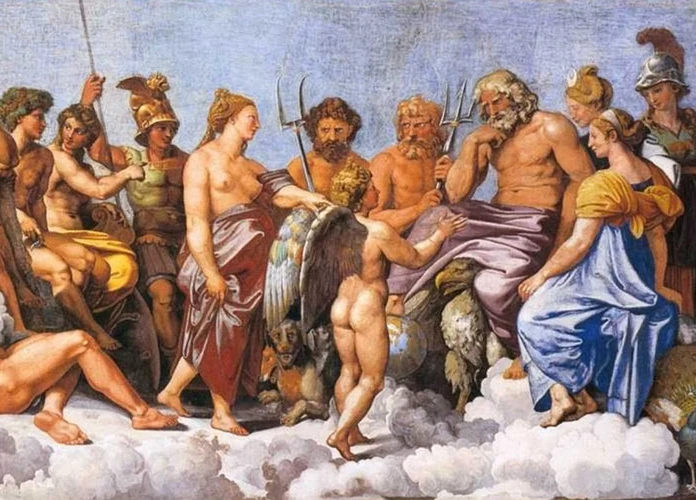Roman Gods and Goddesses: Mythology and Beliefs in Ancient Rome
Step into the fascinating world of ancient Rome and explore the captivating realm of Roman gods and goddesses. The ancient Romans had a rich and complex mythology that shaped their beliefs, rituals, and society. From the powerful and revered Jupiter to the cunning and resourceful Minerva, this article delves into the origins, roles, and worship of the diverse pantheon of deities in Roman mythology. Discover the temples and sanctuaries that were dedicated to these gods, and unravel the cultural and social significance of their influence on ancient Roman society. Join us on this journey through time to connect with the gods of a bygone era and understand their lasting impact on our modern world.
Contents
- Overview of Roman Mythology
- Roman Gods
- Worship and Rituals
- Influence on Roman Society and Culture
- Legacy and Modern Influence
- Conclusion
-
Frequently Asked Questions
- 1. What is the origin of Roman mythology?
- 2. How many gods and goddesses are there in the Roman pantheon?
- 3. What are some main differences between Roman and Greek mythology?
- 4. How did the Romans worship their gods?
- 5. Were there any female goddesses of significant importance in Roman mythology?
- 6. Did the Romans worship any unique deities that were not found in other mythologies?
- 7. How did myths and gods influence Roman daily life?
- 8. Were there any famous Roman festivals dedicated to gods and goddesses?
- 9. How did Roman mythology influence art and literature?
- 10. What is the lasting influence of Roman mythology in modern society?
- References
-
Frequently Asked Questions
- 1. Who were the major Roman gods and goddesses?
- 2. Did the Romans believe in multiple gods?
- 3. What were the roles and attributes of the Roman deities?
- 4. Were there any lesser-known Roman deities?
- 5. Were there any unique Roman deities?
- 6. How did the Romans worship their gods?
- 7. What were some of the major Roman festivals and celebrations?
- 8. How did Roman mythology influence art and literature?
- 9. Did Roman mythology have any political or social significance?
- 10. How have Roman gods and goddesses influenced popular culture?
- References
- Read More
Overview of Roman Mythology
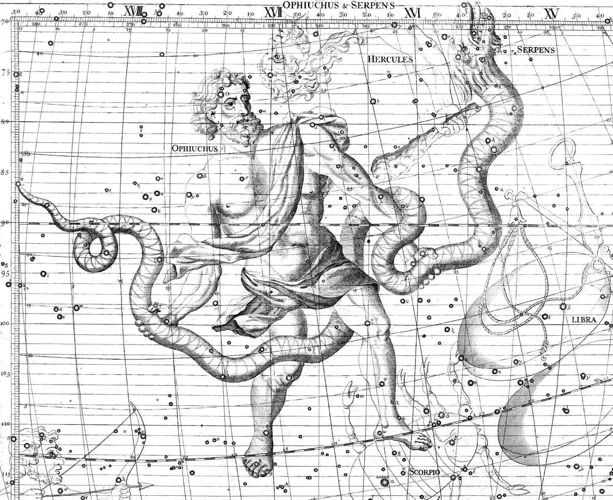
Roman mythology is a captivating tapestry of ancient beliefs and stories that were passed down through generations in ancient Rome. This rich mythology draws influences from various sources, including the Greek pantheon, Etruscan religion, and indigenous Italic deities. The mythology encompassed a vast array of gods and goddesses, each with their own unique attributes, responsibilities, and stories. These deities ranged from the mighty Jupiter, the king of the gods, to Venus, the goddess of love and beauty. The myths and legends surrounding these gods provided explanations for natural phenomena, human behavior, and the origins of the Roman civilization itself. Tales of heroic feats, divine intervention, and awe-inspiring miracles filled the Roman mythological landscape, creating a framework for understanding the world. It’s fascinating to explore the interplay between these divine figures and their human counterparts, as well as the rituals and festivals dedicated to honoring them. The stories of gods like Cupid, Mars, and Mercury continue to capture our imaginations and inspire modern culture, making Roman mythology an enduring legacy of ancient wisdom and wonder.
1. Origins and Influences
The origins of Roman mythology can be traced back to a combination of influences from various cultures and belief systems. One of the primary influences on Roman mythology was the Greek pantheon. The Romans heavily borrowed from Greek mythology, adopting many of the gods and goddesses and incorporating them into their own religious practices. This influence is evident in the similarities between Greek and Roman deities, such as Zeus and Jupiter, and Aphrodite and Venus.
Additionally, the Etruscan civilization, which predates the Roman Empire, played a significant role in shaping Roman mythology. The Romans borrowed several deities from the Etruscans, including Juno, the goddess of marriage, and Vulcan, the god of fire and volcanic activity. The Etruscans also contributed to the Roman religious practice of divination, which involved interpreting signs and omens from the gods to gain insight into the future.
The indigenous Italic peoples of ancient Italy also had their own set of gods and goddesses, which influenced the development of Roman mythology. These indigenous deities were often associated with specific geographic locations and natural elements, such as rivers and mountains. The Romans incorporated some of these local gods and goddesses into their pantheon, assimilating them into their religious practices and attributing them with new roles and responsibilities.
The origins of Roman mythology are a complex tapestry of influences from the Greeks, Etruscans, and indigenous Italic peoples. This fusion of cultural and religious elements created a unique and diverse pantheon of gods and goddesses that were central to the belief system of ancient Rome. Understanding these origins helps shed light on the development and evolution of Roman mythology, as well as its impact on the religious and cultural practices of the Roman civilization.
Sources:
– The Influence of Roman Mythology. Available at: [insert relevant anchor here]
2. The Pantheon of Gods and Goddesses
The Pantheon of Gods and Goddesses in Roman mythology was vast and diverse, with each deity holding a unique role and significance. The Roman pantheon consisted of major gods and goddesses who were widely worshipped, as well as lesser-known deities who had more localized cults.
At the center of the Roman pantheon were the twelve major gods known as the Dii Consentes, also referred to as the Olympians. These council of gods were equivalent to the twelve Olympian gods of Greek mythology, illustrating the strong influence of Greek culture on Roman religion. The Dii Consentes included gods such as Jupiter (Zeus), Juno (Hera), Neptune (Poseidon), Mars (Ares), and Venus (Aphrodite). Each of these deities possessed their own unique domain and attributes, governing aspects of life ranging from love and war to the sea and the heavens. These major gods were worshipped throughout the Roman Empire and played a significant role in the religious and cultural life of the Romans.
In addition to the major gods, the Roman pantheon also comprised a vast number of lesser-known deities. These gods and goddesses often had more localized cults and were associated with specific regions or professions. For example, Ceres was the goddess of agriculture and fertility, worshipped primarily by farmers and agricultural communities. Mercury was the god of commerce, travel, and communication, revered by merchants and messengers. These lesser-known deities added depth and diversity to the Roman pantheon, reflecting the varied needs and concerns of the Roman people in different walks of life.
It is important to note that the Roman pantheon also incorporated a number of deities from other cultures, particularly from Greek mythology. As the Romans came into contact with Greek civilization, they identified the Greek gods with their own equivalent deities and added them to their own pantheon. This syncretism resulted in a blending of traditions and a rich tapestry of divine figures in Roman mythology.
The pantheon of Roman gods and goddesses provided the Romans with a complex framework for understanding the natural and supernatural forces at play in their lives. It reflected their reverence for power, wisdom, beauty, and fertility, and shaped their beliefs, rituals, and societal structure. The worship of these deities was carried out through elaborate ceremonies, sacrifices, and prayers, ensuring the favor and protection of the gods. The pantheon served as a spiritual guide and source of inspiration for the Roman people, offering them a connection to the divine and a means of navigating the complexities of life.
The Pantheon of Gods and Goddesses in Roman mythology was a diverse and intricate web of deities who held immense power and influence over the lives of the Romans. From the mighty Jupiter to the lesser-known gods of specific domains, each deity played a crucial role in shaping the religious and cultural fabric of ancient Rome. Their worship and veneration were an integral part of Roman society, providing a sense of purpose, meaning, and connection to the divine realm. This vibrant pantheon continues to fascinate and inspire us, offering a glimpse into the beliefs and values of an ancient civilization.
3. Roles and Attributes of Deities
The Roman gods and goddesses had distinct roles and attributes that shaped their identities and significance within the religion and society of ancient Rome. Each deity represented various aspects of life, nature, and human experience. Jupiter, the king of the gods and the god of the sky, thunder, and lightning, held immense power and authority. Mars, the god of war, embodied courage and military prowess. Venus, the goddess of love and beauty, symbolized desire and fertility. Mercury, the messenger of the gods, was known for his speed and wit. These are just a few examples of the diverse roles and attributes of Roman deities. Each god or goddess had associations with specific symbols, animals, and objects. For instance, Apollo was often depicted with a lyre and associated with the sun, light, and music. Diana, the goddess of the hunt, was connected to the moon and frequently depicted with a bow and arrow. Understanding the roles and attributes of deities was essential for worshipers in performing rituals and seeking divine guidance. By recognizing and honoring the unique qualities of each deity, ancient Romans believed they could access their specific powers and blessings. The intricate tapestry of roles and attributes of Roman gods and goddesses added depth and complexity to their mythology and provided a framework for understanding the natural and supernatural world. This deep reverence for deities and their attributes permeated all aspects of Roman society, from art and literature to everyday life and religious practices. It shaped the way Romans saw themselves and their place in the world, and their beliefs continue to fascinate and inspire us today.
In Greek mythology, the ambitious Tantalus was condemned to eternal punishment for his transgressions. To learn more about the Tantalus myth and its significance, click here.
Roman Gods
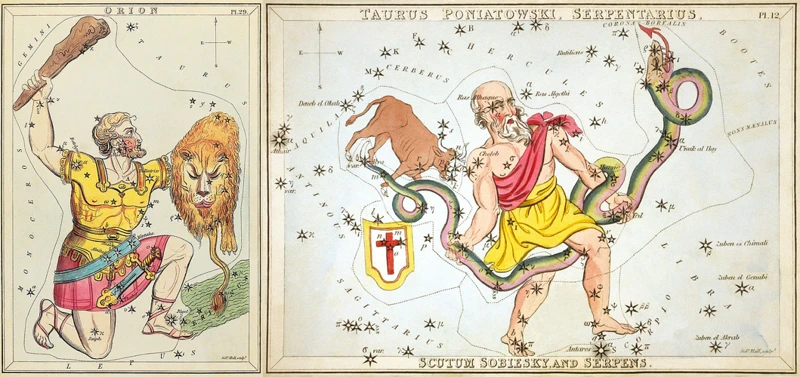
The Roman pantheon was populated by a multitude of gods and goddesses, each with their own distinct roles, attributes, and mythological stories. Among the major gods were Jupiter, the king of the gods and the god of sky and thunder, Mars, the god of war, and Neptune, the god of the sea. Venus, the goddess of love and beauty, and Diana, the goddess of the hunt, were also highly revered. Lesser-known deities included Janus, the god of beginnings and transitions, and Vesta, the goddess of the hearth and home. Additionally, the Romans had their own unique deities, such as Fortuna, the goddess of fortune, and Bacchus, the god of wine and revelry. Each god and goddess played a crucial role in the Roman belief system, with their worship and rituals being an integral part of Roman society. Whether it was offering prayers for a bountiful harvest or seeking protection in times of war, the Roman gods and goddesses were a central pillar of ancient Roman culture and mythology (source: Perfect Match: Ophiuchus and Zodiac Compatibility).
4. Major Gods and Goddesses
The ancient Romans worshipped a pantheon of major gods and goddesses who held significant roles in their mythology and religious practices. These gods and goddesses were central figures in the Roman pantheon and were revered and worshipped by the Roman people. Here are some of the most prominent deities in Roman mythology:
1. Jupiter: Known as the king of gods, Jupiter was associated with the sky and thunder. He was often depicted with a lightning bolt in his hand and was considered the protector of the Roman state and its laws. Jupiter was also associated with divine justice and was the chief god worshipped at the Capitoline Hill, the most important religious center in ancient Rome.
2. Juno: Juno was the queen of the gods and the wife of Jupiter. She was the goddess of marriage, childbirth, and fertility. Juno was often depicted as a regal and majestic figure holding a pomegranate, symbolizing fertility and abundance. She was also the protector of the Roman state and played a vital role in women’s lives, particularly in matters of childbirth and family.
3. Neptune: Neptune was the god of the sea and water. He was depicted with a trident, which symbolized his power over the oceans. Neptune was associated with controlling the tides and storms at sea, making him especially important to Roman sailors and traders. He was also believed to have the ability to cause earthquakes, making him a god of both water and land.
4. Mars: Mars was the god of war and a powerful deity in Roman mythology. He was often depicted in full armor, with a spear and shield. Mars was not only associated with physical warfare but also with agriculture and the protection of crops. He was considered the father of Romulus and Remus, the legendary founders of Rome, and played a crucial role in the city’s mythological and historical origins.
5. Diana: Diana was the goddess of the hunt, the moon, and nature. She was the twin sister of Apollo, the sun god, and was often depicted with a bow and arrows, representing her skills as a huntress. Diana was revered by hunters and was also associated with protecting women during childbirth. She was a popular goddess among the Roman people and had several temples and sanctuaries dedicated to her worship.
These major gods and goddesses formed the backbone of Roman mythology and played significant roles in the lives of the ancient Romans. Their influence extended beyond religious practices and permeated various aspects of Roman society, including art, literature, and politics. The reverence and worship of these deities were central to the spiritual and cultural identity of the Roman people.
5. Lesser-Known Deities
Recent excavations and research have shed light on the fascinating realm of lesser-known deities in Roman mythology. While the major gods and goddesses often take center stage, the ancient Roman pantheon boasts a diverse assortment of lesser-known deities, each with their own unique roles and stories. One such deity is Vesta, the goddess of hearth and home. Vesta was highly revered and her sacred flame, tended by the Vestal Virgins, symbolized the continuity and security of the Roman state. Another lesser-known deity is Janus, the god of beginnings and transitions. Janus was often depicted with two faces, representing the duality of past and future, and was invoked at the beginning of important events and journeys. The goddess Fortuna, often associated with luck and fate, was also an important figure in Roman mythology. She personified the capriciousness of fortune and was revered through various rituals and celebrations. Other lesser-known deities include the goddess Pomona, the deity of fruitful abundance and orchards, and Silvanus, the god of the woods and protector of boundaries. These lesser-known deities may not receive as much recognition as their more famous counterparts, but they played significant roles in the daily lives and religious practices of the ancient Romans. Exploring these lesser-known deities provides a deeper understanding of the complexities and diversity of Roman mythology.
6. Unique Roman Deities
6. Unique Roman Deities
In addition to the well-known gods and goddesses of Roman mythology, there were also a number of lesser-known and lesser-revered deities that held a special place in Roman culture. These unique Roman deities often represented specific aspects of life or nature and were worshipped in their own right.
6.1. Janus:
Janus was a peculiar god with two faces, one looking to the past and the other to the future. He was the deity of beginnings, transitions, and gateways. Janus was often depicted as a guardian of doors and entrances, symbolizing the transitions between different phases of life or between physical and spiritual realms.
6.2. Vesta:
Vesta was the goddess of the hearth, home, and family. She played a vital role in Roman religious rituals as the protector of the sacred flame that represented the eternal flame of Rome. Vesta’s hearth was located in her temple, the Vestal Virgins, an order of priestesses, safeguarded the sacred flame and performed rituals to ensure the wellbeing and prosperity of the Roman state.
6.3. Priapus:
Priapus was a fertility god associated with gardens, plants, and male virility. He was depicted with an exaggerated phallus, symbolizing fertility and abundance. Priapus was worshipped to ensure successful crops and bountiful harvests. His statues were often placed in gardens to protect them from harm and bring good fortune.
6.4. Pomona:
Pomona was the goddess of fruitful abundance and was especially revered as the goddess of orchards and gardens. She was often depicted with a cornucopia filled with fruits, symbolizing her ability to grant fertility and abundance to plants. Agriculturists and orchard owners would offer prayers and make offerings to Pomona, seeking her blessings for a fruitful harvest.
These unique Roman deities, though less widely known, played important roles in Roman society and were worshipped by specific groups or individuals seeking their particular blessings and protections. Their inclusion in the pantheon reflects the diverse nature of Roman beliefs and the significance of specialized deities who governed various aspects of life and nature.
Worship and Rituals

Worship and rituals played a central role in ancient Roman society, as the reverence for gods and goddesses permeated every aspect of life. The Romans believed in maintaining a strong relationship with their deities, seeking their favor and protection through acts of devotion. Temples and sanctuaries served as sacred spaces where offerings, prayers, and rituals were performed to honor the gods. Priests and priestesses played crucial roles in facilitating these rituals and acting as intermediaries between the mortal realm and the divine. Festivals and celebrations, such as the Saturnalia and the Lupercalia, provided opportunities for the community to come together in collective worship and revelry. These rituals often involved elaborate processions, animal sacrifices, and theatrical performances that aimed to please the gods and secure their blessings for the prosperity of the Roman state and its people. The worship of deities like Juno, Neptune, and Vesta held special significance in Roman society, with each god having specific rituals and practices associated with their worship. The meticulous attention to religious observance was not only a spiritual endeavor but also a means of reinforcing social cohesion and maintaining the divine favor upon the Roman Empire.
7. Temples and Sanctuaries
Temples and sanctuaries held a significant place in ancient Roman society as places of worship and veneration for the gods. These sacred spaces were designed to honor specific deities and provide a physical connection between the mortal realm and the divine. The construction of temples was an intricate process, with careful attention given to architectural design and symbolic elements. Temples were typically built on elevated ground, emphasizing their importance and grandeur. The interior of a temple often housed a statue or representation of the deity it was dedicated to, allowing worshippers to offer prayers and sacrifices in their presence. These statues were seen as the physical embodiment of the divine, and their images were adorned with lavish decorations, clothing, and jewelry. Temples were not only places of worship but also served as gathering places for religious ceremonies and festivals. Additionally, many sanctuaries were located in natural surroundings, such as caves, groves, or springs, believed to possess spiritual energy. These sacred sites provided opportunities for pilgrimage and contemplation, allowing worshippers to connect with the gods in a serene and tranquil environment. The temples and sanctuaries of ancient Rome were not only architectural marvels but also vital institutions that played a central role in the religious and cultural life of the empire.
8. Festivals and Celebrations
Festivals and celebrations held a significant place in ancient Roman culture, serving as a way to honor and appease the gods and goddesses. These events were eagerly anticipated by the Roman citizens and were marked with great enthusiasm and fervor. Here are some notable festivals and celebrations in ancient Rome:
1. Saturnalia: One of the most popular and widely celebrated festivals, Saturnalia was dedicated to the god Saturn. It took place in mid-December and lasted for seven days. During this festival, social norms were temporarily overturned, and people indulged in feasting, gift-giving, and merrymaking. Slaves were given temporary freedom and were honored alongside their masters.
2. Lupercalia: Lupercalia was an ancient pastoral festival celebrated on February 15th. It was dedicated to Lupercus, the god of fertility and shepherds. The festival involved purification rituals and fertility rites. Participants, known as Luperci, would run through the city while clad in goatskins and thongs, symbolizing fertility and purification.
3. Floralia: Floralia was dedicated to the goddess Flora, the goddess of flowers and fertility. This festival, held from April 28th to May 3rd, marked the arrival of spring and the blooming of flowers. It was celebrated with vibrant processions, theatrical performances, and games. The highlight of Floralia was the scattering of beans and grains to symbolize fertility and abundance.
4. Pompeii’s Dionysian Festival: This festival, held in honor of the god Dionysus, was celebrated annually in the ancient city of Pompeii. It featured theatrical performances, music, dancing, and processions. The festival was a grand spectacle that attracted visitors from far and wide.
5. Quinquatria: Quinquatria was a five-day festival dedicated to the goddess Minerva, the goddess of wisdom, arts, and trade. It primarily celebrated artisans, especially those involved in the arts, like painters and sculptors. The festival included religious rites, athletic contests, and artistic exhibitions.
These festivals and celebrations played a crucial role in promoting community spirit and reinforcing religious beliefs in ancient Rome. They provided an opportunity for people to come together in celebration, to express gratitude to the gods, and to seek their blessings for a prosperous future. Through these events, the influence of Roman mythology extended beyond the temples and into the everyday lives of its citizens.
Influence on Roman Society and Culture
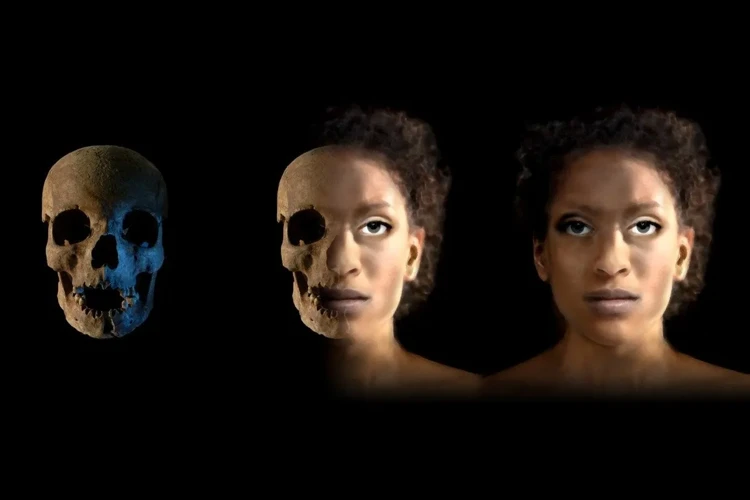
The influence of Roman mythology on society and culture was profound and pervasive. From the earliest days of the Roman civilization, religion played a central role in the lives of its people. Mythological stories provided a moral compass and a sense of identity, shaping their values and beliefs. Temples and sanctuaries dedicated to the gods served as important community gathering places, fostering unity and a sense of shared purpose. Roman art and literature were greatly influenced by mythological themes, with sculptures, mosaics, and frescoes depicting scenes from ancient myths. The epic poetry of Virgil, with his renowned work “The Aeneid,” celebrated the foundation myth of Rome and the heroic deeds of its legendary founder, Aeneas. Mythological figures were also personified in the everyday lives of the Romans, providing inspiration and guidance in various aspects such as politics and warfare. For instance, Augustus, the first Roman emperor, used the myth of his divine connection to Apollo to legitimize his rule and cultivate a sense of divine authority. The influence of Roman mythology can still be seen in modern society, with references to Roman gods and goddesses in literature, artwork, and even popular culture. This enduring impact is a testament to the power and significance of ancient Roman mythology in shaping the world we live in today.
9. Mythological Art and Literature
Mythological Art and Literature played a significant role in ancient Rome, as they were instrumental in conveying and preserving the stories, beliefs, and values of Roman mythology. Visual representations of gods and goddesses adorned various forms of art, including sculptures, frescoes, mosaics, and pottery. These artworks not only served as decorative pieces but also as educational tools, ensuring that the mythological tales and iconography were deeply ingrained in the collective consciousness of the Roman people.
Statues and reliefs of gods and goddesses were prominent features in temples and public spaces, visually asserting the divine presence in daily life. For example, the colossal statue of Jupiter Optimus Maximus in the temple on the Capitoline Hill symbolized the power and authority of the chief deity. The use of symbolism in mythological art allowed the Romans to connect with the gods and understand their attributes and roles within their society.
Literature also played a crucial role in the dissemination of Roman mythology. Mythological stories and epics were penned by renowned authors such as Ovid, Virgil, and Livy. Ovid’s “Metamorphoses” is a particularly notable work that covers a wide range of mythological tales and embodies the essence of Roman mythology. These literary works not only entertained but also served as moral and philosophical guides, shaping the Romans’ understanding of the world and their place within it.
Mythological themes found their way into other forms of literature, such as poetry, drama, and even historical accounts. The stories of heroic figures like Aeneas and Hercules resonated with the Roman people, emphasizing virtues such as bravery, loyalty, and honor.
The influence of mythological art and literature extended beyond the realm of entertainment and education. They played a significant role in politics, as emperors and politicians often used mythological symbolism to legitimize their rule and establish connections with the gods. Architecture, too, incorporated mythological motifs and designs, with temples and public buildings adorned with sculptures and reliefs depicting mythological scenes.
Today, the impact of Roman mythological art and literature can be seen in the continued fascination with the stories and characters. Many artists, writers, and filmmakers still draw inspiration from Roman mythology, creating new interpretations and adaptations that keep the ancient myths alive in the modern world.
To learn more about the intriguing stories and rich imagery of Roman mythology, you can explore ancient artifacts, visit museums, or dive into the works of renowned authors who have captured the essence of this cultural treasure.
The mythological beliefs of the ancient Romans held significant political and social implications in their society. The ruling class often utilized the gods and goddesses in order to solidify their power and maintain social order. Emperors and political leaders would associate themselves with specific deities, linking their authority to divine favor. For example, Augustus, the first Roman emperor, claimed descent from the goddess Venus, enhancing his legitimacy and portraying himself as a chosen leader. The deification of deceased emperors further emphasized the connection between the divine and the political realm. This intertwining of religion and politics created a sense of loyalty and reverence towards the state and its rulers.
The Roman gods and goddesses played a significant role in shaping social norms and values. Religious festivals and rituals were woven into the fabric of everyday life, promoting a sense of communal identity. These religious gatherings provided opportunities for social interaction, reinforcing social hierarchies and fostering a sense of belonging within the community. The temple complexes dedicated to deities, such as the Roman Pantheon, became important meeting places for senators, citizens, and even foreigners. They served as venues for public events, discussions, and cultural activities, solidifying collective consciousness and social cohesion.
The Roman gods and goddesses were not only seen as divine entities but also as guardians and protectors of the Roman state. People believed that the prosperity and success of Rome relied on the favor of the gods. This belief fostered a sense of civic duty and civic pride, as individuals strived to uphold the values and traditions associated with their deities. In times of crisis or war, prayers and sacrifices were offered to appease the gods and seek their protection. This collective devotion to the gods not only instilled a sense of unity among the Roman people but also contributed to the stability and longevity of the Roman Empire.
The political and social significance of Roman mythology cannot be underestimated. It played a vital role in the formation of political power and social cohesion within ancient Rome. The interplay between religion, politics, and societal norms shaped the beliefs and behaviors of the Roman people. Today, the remnants of Roman mythology continue to influence various aspects of modern society, reminding us of the profound impact that these ancient gods and goddesses had on the world they once ruled.
Legacy and Modern Influence
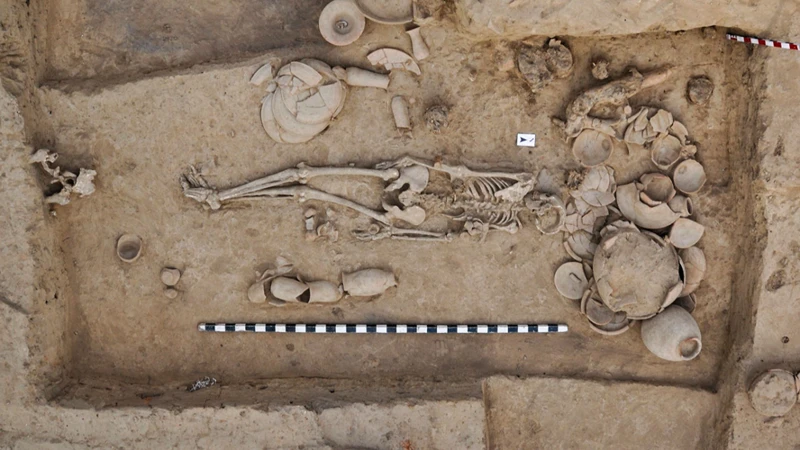
Legacy and Modern Influence
The legacy of Roman gods and goddesses extends far beyond the ancient world, leaving an indelible mark on contemporary culture. From literature and art to film and television, the influence of Roman mythology can be seen in various forms of media. Many popular works of fiction, such as Rick Riordan’s “Percy Jackson” series, draw heavily from Roman mythology, introducing these captivating deities to a new generation of readers. The influence of Roman gods and goddesses can also be seen in the fields of astrology and astronomy. For example, the zodiac sign Ophiuchus, which represents a celestial figure linked to the god Apollo, gained recognition in modern astrology. This blend of ancient and modern ideas showcases the enduring fascination with Roman mythology, as well as its ability to continue inspiring and captivating audiences today. Whether through movies, literature, astrology, or even the fascination with constellations like Cassiopeia, the gods and goddesses of ancient Rome live on in our modern world, reminding us of the enduring power of their stories and their relevance in our lives.
11. Roman Gods in Popular Culture
Roman gods and goddesses have left an indelible mark on popular culture, permeating various forms of media including literature, film, television, and even video games. Their archetypal characters and epic adventures continue to captivate audiences worldwide. Take, for example, the lightning-wielding Jupiter, whose influence can be seen in the popular superhero Thor from Marvel Comics. Both characters possess immense power and are associated with storms and thunder. Another well-known deity is Neptune, the Roman god of the sea, who has made appearances in various works of literature and film, often depicted as a powerful and imposing figure with control over the vast depths of the ocean. Venus, the goddess of love and beauty, has inspired countless portrayals in art, literature, and music. The enduring myth of Cupid and Psyche, often recounted as a tale of forbidden love, has served as a foundation for countless romantic narratives. These are just a few examples of how Roman gods and goddesses continue to be revered and reinterpreted in popular culture. Whether in the form of mythological retellings or modern adaptations, their enduring presence serves as a testament to the timeless fascination and relevance of Roman mythology.
12. Roman Religion in Modern Paganism
Roman Religion in Modern Paganism
Roman religion has not been confined to the annals of history, as its influence can still be felt in modern times. In the realm of modern paganism, there is a revival of interest in ancient Roman religious practices, beliefs, and deities. This resurgence stems from a desire to reconnect with the spiritualities of the past and to honor the gods and goddesses that were once revered in ancient Rome.
One way that Roman religion has found its place in modern paganism is through the establishment of reconstructionist groups, which aim to reconstruct and revive the religious practices and rituals of ancient Rome. These groups meticulously study ancient texts, artwork, and archaeological evidence to piece together an understanding of how religious ceremonies were conducted in ancient Rome. From the construction of altars and temples to the performance of traditional rituals and festivals, these modern practitioners seek to recreate the religious experiences of their Roman ancestors.
In addition to reconstructionist groups, there are also individuals and groups who incorporate Roman deities into their eclectic or syncretic pagan practices. They may blend elements of Roman mythology and symbolism with other pagan traditions, creating a unique spiritual path that resonates with them personally. For example, someone may incorporate the worship of Jupiter into their eclectic practice, combining it with elements of astrology or divination.
The popularity of Roman gods and goddesses in modern paganism can be observed through the inclusion of these deities in contemporary pagan rituals and ceremonies. Public rituals and gatherings often feature invocations, prayers, and offerings to Roman gods, enabling participants to form a connection with these ancient deities and draw upon their strengths and attributes.
It is important to note that modern pagan practices are diverse and individualistic. The ways in which Roman religion is incorporated into modern paganism can vary greatly. Some may focus primarily on historical accuracy and authenticity, while others emphasize personal interpretation and spiritual exploration. Regardless of the approach taken, the presence of Roman religion in modern paganism reflects a deep appreciation and reverence for the ancient traditions of Rome and the enduring power of its gods and goddesses.
Conclusion
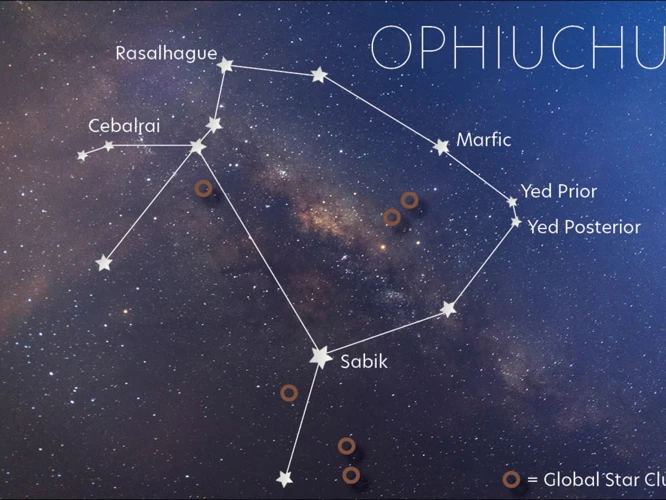
In conclusion, the world of Roman gods and goddesses reveals not only a remarkable religious belief system, but also a deep cultural and social significance in ancient Rome. The rich pantheon of gods and goddesses, with their varied roles and attributes, provided the Romans with explanations for the world around them and served as a moral compass for their society. The temples and sanctuaries dedicated to these deities were not only places of worship, but also centers of community and social engagement. The mythology of ancient Rome also left a lasting impact on art, literature, and even politics, shaping the identity and values of the Roman people. Even in modern times, the gods and goddesses of ancient Rome continue to have a presence in popular culture and have inspired movements within modern paganism. Roman mythology is a testament to the enduring power of ancient beliefs and serves as a reminder of the fascinating and complex world of gods and goddesses that once captivated the hearts and minds of the ancient Romans.
Frequently Asked Questions

1. What is the origin of Roman mythology?
Roman mythology finds its origins in a combination of Greek mythology, Etruscan beliefs, and indigenous Italic traditions. As Rome expanded its territories, it absorbed and integrated various cultural and religious influences.
2. How many gods and goddesses are there in the Roman pantheon?
The Roman pantheon consists of a vast number of gods and goddesses, but the exact count is difficult to determine. There are numerous major deities such as Jupiter, Juno, and Neptune, as well as countless minor gods and goddesses associated with specific aspects of life.
3. What are some main differences between Roman and Greek mythology?
While Roman and Greek mythology share many similarities due to their historical and cultural connections, there are notable differences. Roman gods often assume different names and have distinct attributes compared to their Greek counterparts. Additionally, Roman mythology tends to focus more on Rome’s founders and the city’s rise to power.
4. How did the Romans worship their gods?
The Romans worshiped their gods through various rituals, including sacrifices, offerings, prayers, and festivals. They built temples and sanctuaries as places of worship and conducted ceremonies to honor and seek favor from the gods.
5. Were there any female goddesses of significant importance in Roman mythology?
Absolutely! Roman mythology includes powerful and influential goddesses such as Juno, the queen of the gods and protector of women, and Minerva, the goddess of wisdom, arts, and strategy. Venus, the goddess of love and beauty, also played a prominent role.
6. Did the Romans worship any unique deities that were not found in other mythologies?
Yes, the Romans had several unique deities that were specific to their mythology. For example, Janus was the god of beginnings and transitions, and Vesta was the goddess of the hearth and home. They also worshiped the protective god Terminus, who watched over city boundaries.
7. How did myths and gods influence Roman daily life?
Roman myths and gods played a significant role in shaping various aspects of daily life. They provided moral and social guidance and were invoked during important events such as weddings, births, and military campaigns. The influence of gods extended to areas like politics, war strategies, and the agricultural cycle.
8. Were there any famous Roman festivals dedicated to gods and goddesses?
Absolutely! The Romans celebrated numerous festivals to honor their gods. One of the most famous was the Saturnalia, a festival dedicated to Saturn, the god of agriculture and liberation. Another popular festival was the Lupercalia, associated with purification and fertility.
9. How did Roman mythology influence art and literature?
Roman mythology had a profound impact on art and literature in ancient Rome. It served as inspiration for sculptures, frescoes, mosaics, and epic poems like Virgil’s Aeneid. Mythological themes were recurrent in Roman art, allowing the gods and their stories to be immortalized in various artistic forms.
10. What is the lasting influence of Roman mythology in modern society?
Roman mythology continues to have a lasting influence on modern society. The gods and goddesses from ancient Rome often appear in literature, films, and other forms of entertainment. Additionally, their names are often used to represent planets, constellations, and other celestial bodies.
References
- Roman Gods & Goddesses | List, Names & Family Tree
- in the First Century. The Roman Empire. Roman Gods
Frequently Asked Questions

1. Who were the major Roman gods and goddesses?
The major Roman gods and goddesses were Jupiter, Juno, Mars, Neptune, Venus, Apollo, and Diana. Jupiter was the king of the gods, while Juno was his wife and queen. Mars was the god of war, Neptune ruled over the sea, and Venus was the goddess of love and beauty. Apollo was the god of the sun, music, and poetry, and Diana was the goddess of the moon and the hunt.
2. Did the Romans believe in multiple gods?
Yes, the Romans believed in multiple gods and goddesses. Their pantheon consisted of a vast number of deities, each with their own specific roles and attributes. The Romans believed that these gods controlled various aspects of life and could influence the success or failure of their endeavors.
3. What were the roles and attributes of the Roman deities?
The Roman deities had various roles and attributes. For example, Jupiter was the god of the sky and thunder, while Juno was the goddess of marriage and childbirth. Mars was associated with war, and Neptune was the ruler of the sea. Each deity had a specific domain and was often invoked by individuals seeking their favor or protection.
4. Were there any lesser-known Roman deities?
Yes, alongside the major gods and goddesses, there were also many lesser-known deities in Roman mythology. These included gods like Bacchus, the god of wine and revelry, and Mercury, the god of commerce and communication. There were also goddesses such as Vesta, the goddess of the hearth, and Minerva, the goddess of wisdom and crafts.
5. Were there any unique Roman deities?
Yes, the Romans had a few unique deities that were specific to their culture. For example, Janus was the god of beginnings, transitions, and doorways. He was often depicted with two faces—one looking to the past and the other to the future. Another unique deity was Saturn, the god of agriculture and wealth.
6. How did the Romans worship their gods?
The Romans worshiped their gods through various rituals and ceremonies. They built temples and sanctuaries where they could make offerings and prayers to the gods. They also celebrated festivals and held public processions in honor of specific deities. Additionally, individuals would often have personal altars in their homes where they could make daily offerings and seek divine guidance.
7. What were some of the major Roman festivals and celebrations?
Some of the major Roman festivals and celebrations included Saturnalia, a festival honoring the god Saturn and marked by feasting, gift-giving, and revelry. Another significant festival was the Lupercalia, dedicated to the fertility god Lupercus. The Romans also celebrated the Vestalia, a festival for the goddess Vesta, and the Ludi Romani, which were games held in honor of Jupiter.
8. How did Roman mythology influence art and literature?
Roman mythology had a significant influence on art and literature. Many statues, paintings, and mosaics depicted scenes from mythology, showcasing the gods and goddesses in various forms. Mythological stories and themes were also frequently incorporated into Roman literature, including epic poems like Virgil’s “Aeneid” and Ovid’s “Metamorphoses.”
Yes, Roman mythology had both political and social significance. The Romans often used myths and legends to justify their political structure and actions. For example, they traced their ancestry back to the Trojan hero Aeneas, as told in Virgil’s “Aeneid,” thereby connecting themselves to the glory and power of ancient Troy. Additionally, myths played a role in reinforcing social norms and values within Roman society.
10. How have Roman gods and goddesses influenced popular culture?
Roman gods and goddesses continue to have a strong influence on popular culture. They are frequently featured in literature, films, and television shows, with characters and storylines drawing inspiration from Roman mythology. Additionally, many city names, planets, and astronomical terms are derived from the names of Roman deities, further highlighting their lasting impact on modern society.
References
- What did ancient Romans believe about their gods? …
- Roman Gods & Goddesses | List, Names & Family Tree
- in the First Century. The Roman Empire. Roman Gods

